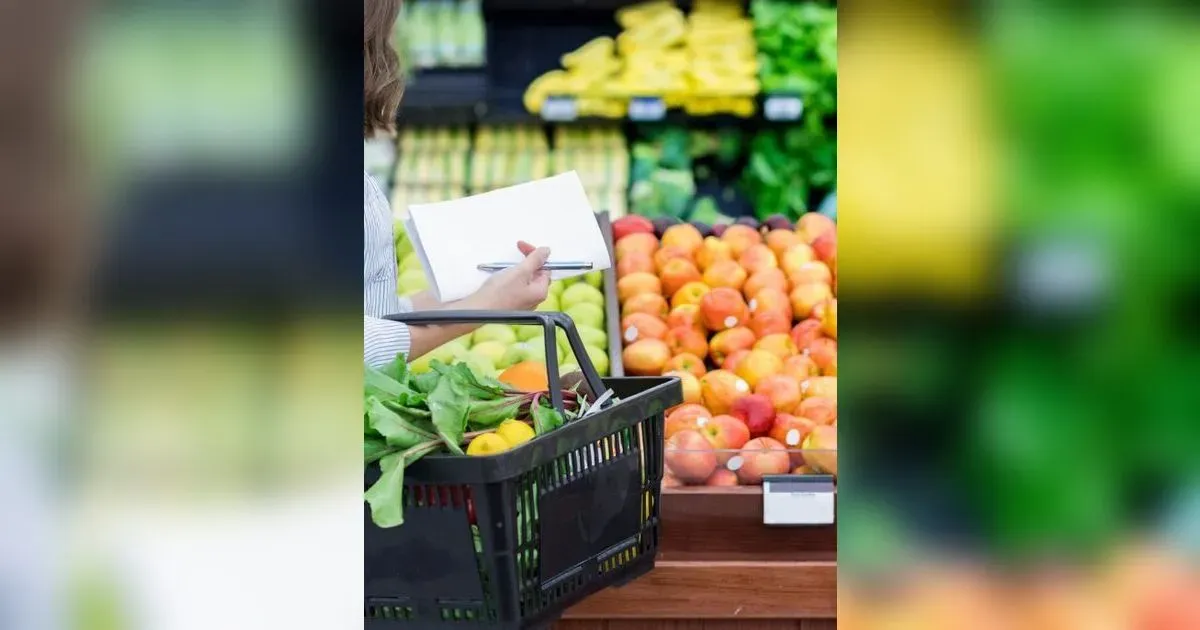Whoever said farming was something reserved for the countryside only? Well, farming has now been revolutionized, with the era of Gen Z at the forefront of this green movement.
Ditch tractors and large fields; think smart systems, AI-powered farms, and vertical gardens spouting fresh produce right in the middle of cities. With a cadre of tech-savvy innovators taking over urban farming, the idea has never been more necessary.
But how, and why? Read through this article to get an in-depth view of urban farming, what tools, technologies, and trends Gen Z member states use to reimagine how we grow our food.
What's Behind Gen Z's Urban Farming Revolution?
1. The 'Lifestyle Beyond the Trend' of Sustainability
Gen Z is for living green-from giving up fast fashion for thrift to reducing plastic waste, this generation is all about lessening its carbon footprint. Traditional farming methods account for the largest percentage of greenhouse gas emissions, water waste, and deforestation.
With urban farming, the potential for growing food becomes much more local, therefore reducing "food miles"-the distance the food travels from farm to table-underutilizing space in urban areas, such as rooftops and vacant lots.
It's about time Generation Z stepped forward-not just as consumers but as makers-designing systems to make farming smarter, more sustainable, and more accessible to city dwellers.
2. Climate Change-A Call to Action
The headlines pop every other day, and this is one of those developments where an urgent need to mobilize a call for action is felt. The wildfires, floods, and unpredictable weather patterns might have hit many Gen Zs personally and are capable of testing worldwide food production.
On the contrary, urban farming can build resilient food systems that assist in the potential climate change uncertainties. Because they produce food near where it is to be eaten, urban farms obviate the possibility of supply chain collapse and ensure fresh and healthy produce during adverse times.
Tech-Powered Solutions: How AI and Automation Are Shaping the Future of Food
It's no more about crops, per se, but rather the very way in which food production is happening is being created anew through technology within dense cityscapes.
With AI, hydroponics, and vertical gardens, a whole new generation of farmers-the Gen Z ones-understand and have embraced technology-empowered means of farming-smart, productive, and sustainable.
A look at some such innovations and how they are reforming urban agriculture follows.
1. AI-Driven Smart Farms: The Brain Behind Urban Agriculture
There's one thing at which Generation Z excels: interlacing technology into the fabric of existence.
From smart homes to smartphones, their world is quite literally interconnected. This explains why the latest trick off their sleeves should come as no surprise-the use of the ultimate smart solution-artificial intelligence, or AI.
In the case of Harvest Optimization, just like in the case of Urban Farming, the usage has already been extended to sensors and automation means powered by AI for monitoring soil quality, moisture, and air temperature for optimal yield.
In this smart farm, AI controls how frequently water is administered, at what speed and quantity of light plants receive, and can even closely monitor nutrient levels.
It's like a personal assistant for your crops: AI learns and adapts to make sure you receive maximum yields whatever the weather or environmental uncertainty may bring along.
This enables farmers to grow more with less, perfect for cities that have scarce land and a high need for sustainability.
Example: FarmWise-U.S.
FarmWise has come up with an American AI farming system that empowers farming robots to do weeding and fertilizing and monitor plant growth fully automatically with the use of AI.
Aerobotics-South Africa
In Africa, a South African startup, Aerobotics is using AI to develop drone technology that provides very accurate visuals to farmers about the health status of crops.
It aids farmers by generating real-time data on diseases and stresses in water and nutrition; hence, farmers are able to identify the same early and can therefore keep crops healthy, thus yielding better results.
Twiga Foods-Kenya
The technology-enabled food distribution company Twiga Foods integrates the use of AI to ensure good supply chain management.
This links small-scale farmers in the urban areas directly to the retailers, ensuring minimum wastage of food, and it also ensures timely delivery of produce to farmers, assuring greater profit margins.
2. Hydroponics: Farming without Soil -the Urban Game Changer
Hydroponics is slowly changing the face of urban agriculture. With the help of this technique, the plants are not required to grow in the soil; their growth is instead provided by irrigating them with nutrient-rich water.
Gen Z has taken quite a fancy because they require much less space and water as compared to traditional farming; hence, ideal to be nurtured in city living where space is a luxury.
How Hydroponics Works
Hydroponic farming is a form of agriculture that requires suspending the crops in a hydro solution full of nutrients rather than being with the soil. Crops will directly get their nutrients from the water and, hence, in this system, they often grow faster.
Adding to the excitement in the urban farmer's business is their ability to stack up vertically: many layers of crops grown on tiny spaces, including balconies and rooftops-even indoors.
Example: Amiran Kenya and Kigali Farms in Rwanda
Amiran Kenya has been among the first firms to introduce small-scale farmers to hydroponics in the Kenyan market.
Their new, more affordable hydroponic kits promise to help young urban farmers grow vegetables-from tomatoes to spinach-on tiny rooftops and backyard lots. Kigali Farms does the same through hydroponic farming, growing mushrooms right in the heart of urban areas in Rwanda.
Hydroponic farming requires very minimal water and space; hence, it helps them grow a great deal of mushrooms in huge amounts with very minimal impact on the environment, hence averting pressure on the rural land.
Hydroponics have also helped the fight against food deficiency in water-stressed regions of countries like Egypt, where innovative urban farmers make use of hydroponic systems to develop fresh produce in the desert .
3. Skyrocketing Vertical Gardens: Food from the Sky
While the city keeps on expanding, spaces for traditional farming shrink, so vertical gardens have indeed been a success in diversifying the way town residents grow their food.
The name vertical gardens is commonly used to refer to vertical farms, which enable the growth of crops upwards in a small space. This form of farming has been reducing farmers' efficiency and attracting Generation Z, just like it is a great view and can reposition people with nature.
Greener Urban Spaces
Vertical gardens can be established indoors, outdoors, along the sides of buildings, and in public areas. Other than yielding fresh harvests, they cool the environment and help solve part of the problems of heat islands in concrete jungles.
The gardens are one way citizens can make contributions to food production and beautify urban spaces.
The method is a solution to food security and community involvement in most African cities. The concept utilizes space that has not been tapped on walls and rooftops to convert them into lush farms.
Example: Kilimohai Smart Gardens
Kilimohai Smart Gardens train the youth in sustainable farming, exclusively using vertical gardens in Nairobi. They are growing vegetables like kale, lettuce, and herbs. It is grown in vertical stacks to achieve higher yields with very minimum space and water usage.
These will be replicated in a number of schools and community centers, hence, creating a movement that informs and empowers the next generation of urban farmers.
Johannesburg City Parks and Zoo
South Africa has initiated the development of vertical gardens in open spaces, along with the residents, placing them at the center of Joburg city in areas that may have had a lack of greenery. This helps in creating sources of fresh produce for low-income city residents.
Vertical Farms: More Than Food
For Generation Z, vertical gardens mean so much more than food-they mean social impact and design, too. The majority of vertical gardens will make their way into the cityscape today, smoothly integrating aesthetic pleasures and functionality.
Think of towering green walls growing fresh herbs and vegetables while cleaning air and reducing noise pollution in city areas.
Beyond Buzzwords: Tangible Impact of Urban Farming
1. Combat Food Deserts
Urban farming isn't some sort of fad; instead, it's a solution to rather real problems. One of the large ones facing most cities today involves "food deserts"-that is, areas in which residents can access little or no fresh, healthy food.
The Gen Z farmers use vertical gardens and smart systems to bring the produce into those areas where fresh produce is most needed. Closing the gap between farm and table can deliver wholesome, fresh food to those who need it most at reasonable prices.
All this helps democratize access to healthy food and creates healthier, more equitable cities.
2. Reduce Food Waste
At the moment, roughly one-third of all the food produced globally is being wasted-one of the major problems confronting the whole world today.
Generation Z innovators step in with smart solutions in an attempt to cut down on that figure. One can produce only what is required using maximum efficiency-from the use of AI-driven systems that predict crop yields to growing on-demand food on urban farms.
Others have gone to the length of creatively reutilizing the food waste by composting and then using it in the subsequent crops. Urban farming completes this circuit on food production by offering a system that is both workable and viable.
How You Too Can Join the Urban Farming Movement
1. Build Your Own Vertical Garden
Think you need acres to grow your own food? Think again. Vertical gardens are perfect for small spaces, and they're actually relatively easy to install.
All you need is a bit of space, some seeds, and a vertical structure to grow your plants. Whether it's a small herb garden in your kitchen or a full-on vertical farm on your balcony, really, the options of what you can grow in a small space are endless.
2. Be an Urban Farmer: Engage in Community Service
Urban farming is not all about food; it is a community builder. Most cities have either an urban farming collective or community garden you can volunteer for, learn from, and share your ideas with.
It is among the best ways to be associated with the strive for sustainability at large and to actually create an impact within your local community.
What's Next for Gen Z Farmers: The Future of Food
With increasing urbanization and worsening climate change, the rate of contribution to more urban farming can only go uphill.
With Generation Z leading the trend, so much more potential can be let loose. Even in the future, advanced technologies may see farming assisted by drones, crop monitoring systems run by AI, and urban farms sustained by renewable energy.
1. Drones and Robots at Urban Farms
From monitoring crop health to planting seeds in a location inaccessible otherwise, drones may play a huge role in future urban farming. The automated robots might take over jobs that become much more labor-intensive-such as crop harvesting or maintaining a vertical garden.
2. Renewable Energy-Powered Farms
To Generation Z, it is all about sustainability. So, when renewable energy sources-solar panels-continued powering most of the urban farms sprinkled across cities around the world, that was not a big surprise.
Technologies for renewable energy keep on evolving; hence, more and more farms powered by clean energy that drive their carbon footprint even lower will start to show.
Conclusion
It's more than just a passing trend; it's how we're going to be creating our food in the future. And at the forefront of that-Generation Z. They are taking urban cities and making them into sustainable agriculture with systems, AI, and hydroponics.
The coolest thing? You don't have to live on a farm to join in on the revolution. From the sprouting herbs on your window sill to volunteering at an urban farm in your area, there's room for every single one of us in this green movement.
Engage with the local urban farm, craft your own vertical garden, or at the very least support projects in the building of sustainable food production. We all can take part in building greener, healthier cities-one vertical garden at a time.

























